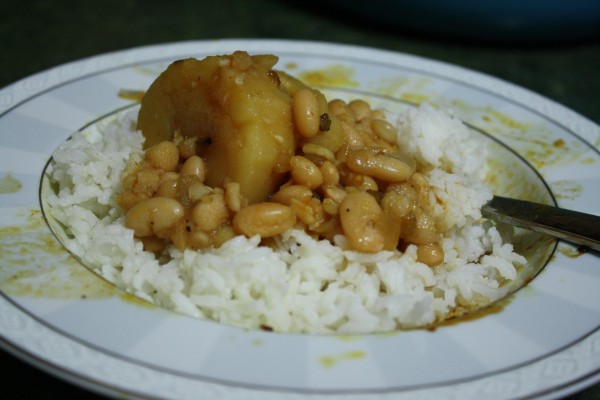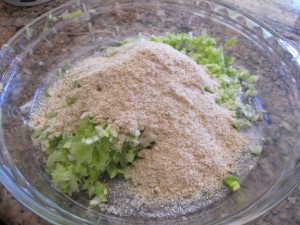The thing about this mint ice cream is that it’s not flavored with extract. Instead, I steeped some mint leaves in the milk and let that flavor the custard. Delicious! Then, I added some chopped up thin mints to the batter during the last few minutes of freezing. Wow! What a great minty combination! You get that bright fresh mint flavor from the ice cream, and then the chewy and pepperminty thin mint bite a little while afterwards. This is a great refreshing summer ice cream. Continue reading
Tag Archives: holiday
Sour Cherry Linzer Tart
I wanted to make something different for Shavuot. The picture of this tart in the cookbook The Art and Soul of Baking just jumped out at me, and I knew I had to try it. Also, I love nutty crusts. When I read through the recipe and saw that it called for cherry or berry juice, I knew I wanted to make this tart even more sour and use POM! Continue reading
Vanilla Ice Cream
 Or, the best ice cream base ever.
Or, the best ice cream base ever.
What’s your favorite ice cream flavor? I’m sure we can make it work…
May is ice cream season! Of course, that means that summer is around the corner and baby and I will be frequenting the Lighthouse for soft-serve strawberry ice cream. But it also means that I can serve ice cream for dessert whenever I have company. And although I love going out for ice cream (even though Zeke doesn’t, despite his love for cake batter ice cream), homemade ice cream often tastes better, especially when you use as many egg yolks as I did in this recipe. Plus, I know exactly what the ingredients are. That’s always a plus for me. Continue reading
A Passover Dessert: Flourless Chocolate Cake
Passover is next week! Who is busy cleaning, looking for hametz and menu-planning!? Everyone? I thought so! We tend to skip the typical Passover dessert. Cakes made with potato starch and matzo meal just aren’t good; we’ll wait a week for the real thing. But this is different. It’s supposed to be flourless, but it’s not one of those rich, dense flourless cakes. The whipped egg whites and cream make it light and airy. Not only is it delicious on Passover, but it’s beautiful! Continue reading
Passover Recipe Roundup
It’s that time of year again!
What time? You ask…well, the time when people serve Passover Food, including those gross rainbow cakes and macaroons from cans, thinking that this is food. Well, have no fear! We at the Kosher Foodies have posted many recipes that are Passover-friendly. They’re mostly savory, but we have some good ones for dessert, too. No need to make what’s considered Passover food, and eat only charoset (not that I would mind) and gefilte fish (ick) for eight days. And though I DO love matzah, sometimes you need to serve it with a side. Continue reading
Fassoulieh Experiment
 Or fasullieh. I’m really not sure how to spell it, and it doesn’t matter because it’s not English. In English, these are Great Northern Beans. These beans absorb flavor really well, so they are great in this dish. They take on the meaty flavor of the marrow bones, and tomatoey flavor from the tomato paste. Serve it over rice, and you have a perfect Shabbat dinner side. Or a nice weeknight meal. Continue reading
Or fasullieh. I’m really not sure how to spell it, and it doesn’t matter because it’s not English. In English, these are Great Northern Beans. These beans absorb flavor really well, so they are great in this dish. They take on the meaty flavor of the marrow bones, and tomatoey flavor from the tomato paste. Serve it over rice, and you have a perfect Shabbat dinner side. Or a nice weeknight meal. Continue reading
Meatless Monday: Eggplant Parmesan
Well, it’s actually Eggplant Parmigiana. But the cheese I bought was spelled Parmesan, so that’s how I’m spelling the title of this dish. Continue reading
Company Pot Roast
I have seen this episode of Barefoot Contessa many many times. Ina makes this pot roast with some baked potatoes. It’s such an easy recipe, though you do need a whole bunch of ingredients to make it. I finally decided to try it, and it was definitely worth it! The pot roast is soft and flavorful, and the sauce is thick and delicious over rice or couscous. I dipped garlic bread in mine. yum! It’s also a pretty forgiving recipe, so if you don’t have some of the ingredients, don’t fret! Continue reading
Leek Ejjeh + Happy New Year
Chag Sameach everyone! We hope everyone has a sweet and healthy new year.
Everyone knows the custom of dipping apples in honey for Rosh HaShanah…actually, our family has different customs (and we don’t even have honey at the table, we use sugar instead). The Sephardic custom is to make many brachot on simanim, the symbolic foods we eat during the seder, before the meal. Before sharing the Leek Ejjeh recipe with you, I thought I might explain what our holiday meal with consist of tonight, and share the simanim that we will eat in order to celebrate the new year. Some more information on a (somewhat different) Rosh HaShanah seder can be found here.
The first siman is apples dipped in sugar (or honey). We eat this so that we will have a good and sweet new year. Cut the apples and serve with a bowl of sugar. Done.
The mext is tamarim, or dates. We eat this so that our enemies may be destroyed. No need to prepare these, we just buy dried dates – medjool dates are quite tasty on their own.
The third siman is leeks. We eat these so that our enemies will be destroyed (again). The recipe for leeks is at the bottom of this post – thanks for your patience!
The fourth siman, swiss chard, is eaten in hopes of removing our enemies (yet again).
The fifth siman is gourd. We make a bracha asking God to tear up any oppressive decrees in areas where Jews live and to proclaim our merits before Him.
The next siman is black eyed peas, or Lubiyeh. We eat this in order to increase our merits. These small beans are eaten stewed with meat – our family uses kibbe (the same little meatballs I made with mushrooms the other day) – and served as part of the regular meal and the seder during the holiday meal.
We eat the next siman, pomegranates (or rimon), asking God to grant us bountiful merits and goodwill, as many as the fruit’s seeds. Cut the fruit in half and immerse in a bowl of water while scraping the seeds away from the flesh with your fingers. The white flesh will float to the top, and the seeds will sink to the bottom. Scrape the flesh from top of the bowl and drain the seeds, it’s as easy as that. This method also stops your kitchen and clothing from getting all red.
Lastly, we eat tongue as the next siman. Tongue is eaten to symbolize a lamb’s head (I think some families eat fish, as well). This is to symbolize that we will be leaders (at the head) rather than followers at the trail. The meat is also a reminder of the ram that Avraham sacrificed instead of his son, Yitzchak. We buy tongue from the deli. Most people at the table don’t want to eat it.
The last thing we eat, after the simanim, is a new fruit. This should be a fruit that has just come into season, and therefore we were unable to eat for an entire year. We say Shehechianu on this fruit and thank God for keeping us alive and bringing us to this season. Our family usually eats starfruit or dragon fruit.
And without further ado, the leek ejjeh we will be enjoying for the next two nights:
We actually make our leeks into small latkes, quite similar to the tasty Chanukah treat. They’re delicious this way – crispy, tasty, and small. Not breaded like onion rings, but with the same flavor. They taste somewhat similar, actually.
Ingredients:
- 2-3 large leeks, or 4-5 small leeks, washed well and chopped (don’t try to grate them on a box grater. They will get stringy)
- 1/2 cup breadcrumbs or matzah meal
- 2 eggs
- Egg white from one egg
- Salt and pepper
- Vegetable oil, for frying
Directions:
1. Prepare oil for frying: pour about 1/2 inch of oil into a high-walled pan. Place on burner over medium heat.
2. Combine leeks, eggs, and breadcrumbs. Mix to combine. Check consistency. If it’s too dry, add the egg white. If too wet, add more bread crumbs. The batter should be loose but be able to come together into a ball if squeezed. Add salt and pepper.
3. Using a tablespoon measure, scoop out batter into balls.
4. Test the frying oil with a tiny amount of batter. Make sure it sizzles but doesn’t burn. Prepare a plate or tray to drain the patties after frying. I used a paper towel-lined plate. My grandmother used to use brown paper bags (yes, the ones from the grocery store). Alton brown uses a cooling rack on top of a towel-lined cookie sheet. That’s probably the best idea if you can do it.
5. Using a slotted spoon, drop the batter, one at a time, into the oil, flattening into patties as you drop them. Only put 5-4 in the oil at a time, because you don’t want the temperature to drop too much and the patties to get soggy.
6. After one minute, they should be brown. Flip the patties. Fry on the other side for a minute. Remove from oil with slotted spoon and place on draining plate. Repeat until all are fried.
7. Sprinkle with salt when still warm.
8. Serve along with the bracha: “that those who hate us be cut away”
Shana tova!
Shavuot Recipe Roundup
Shavuot is distinct from most other holidays because we traditionally eat dairy (why?). This means that we can eat gooey cheesey dinners, and more importantly, we don’t have to make desserts using fake butter like we usually do!! So we always pick out some special recipes to share with our family during this holiday.

















